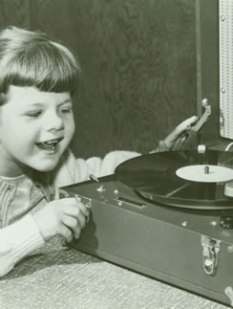Blind readers have been able to listen to recorded books since the 1930s — two decades before sighted readers were able to purchase commercial recordings of fiction. The service began in response to the needs of war-blinded veterans who had lost their sight in the First World War and were unable to read Braille. It turned out that the majority of blind people were unable to read Braille, and many of those who did took little pleasure from it. The talking book service offered intellectual stimulation, entertainment, and companionship to thousands of people who thought they might never be able to read again after losing their eyesight.
The New Yorker published an account of the talking book service in 1962: “The Recorded Companions.”

